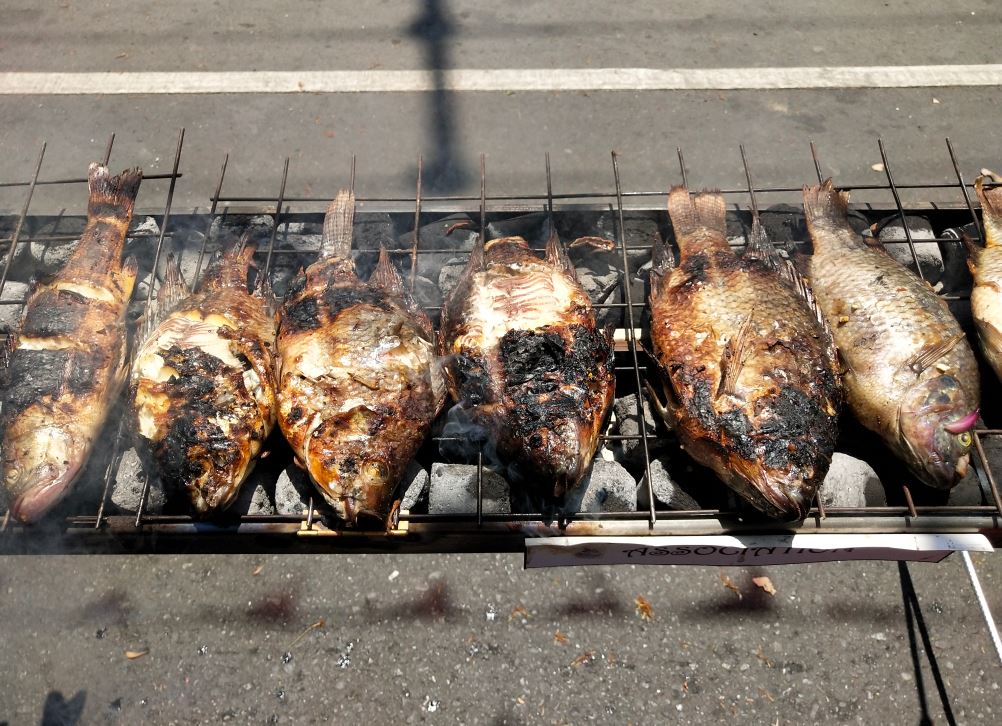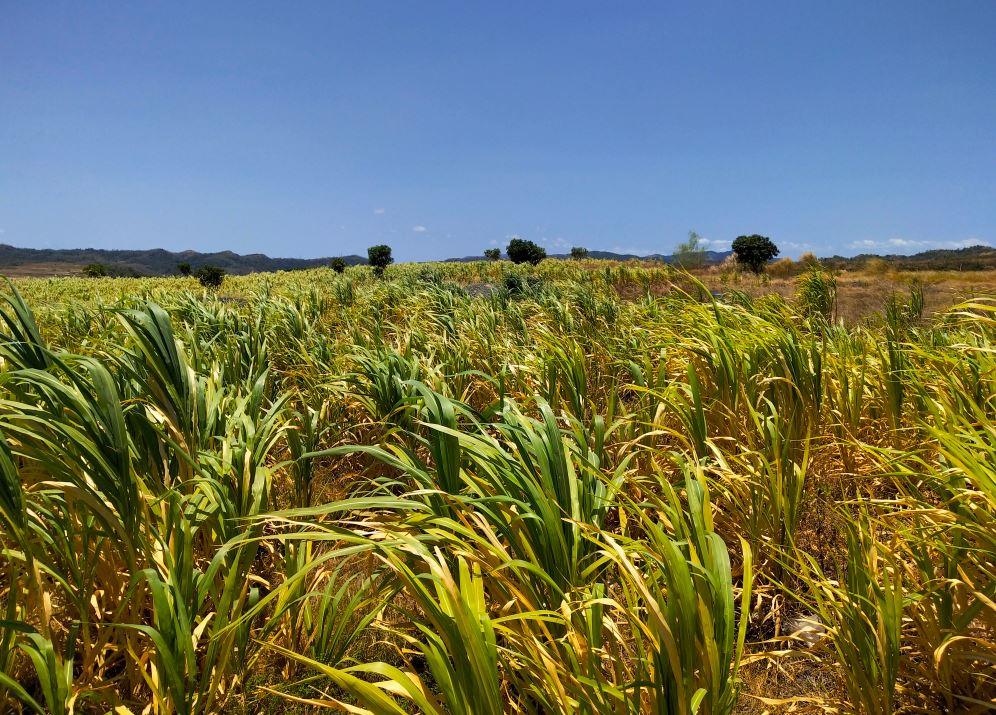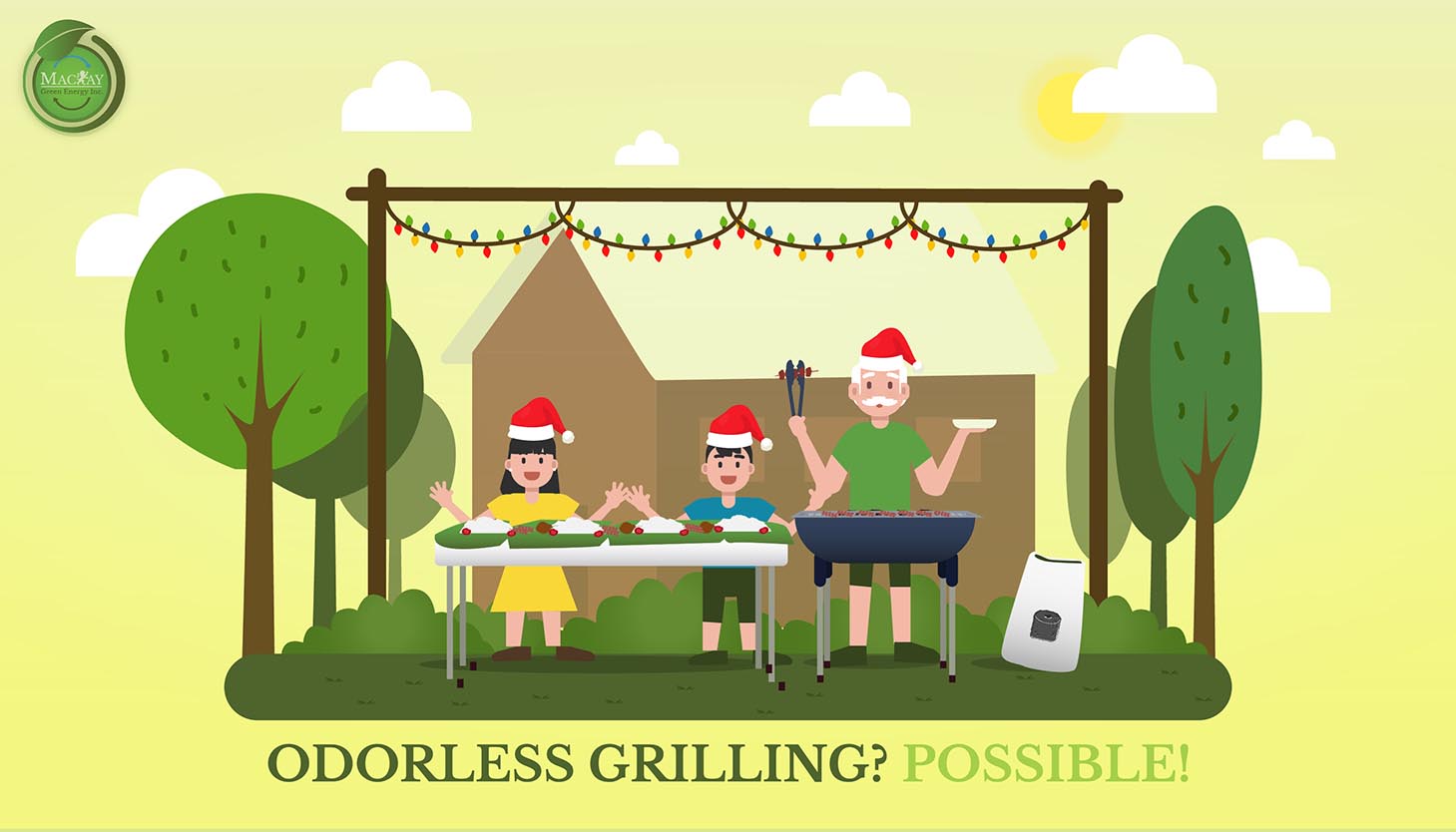GREEN CHARCOAL
by Gilbert Kim Sancha

At the eighth edition of the Pandawan Festival held in Pantabangan, Nueva Ecija, the lure of grilled fishes like tilapia, burasi and hito was outshone by something called “bana.”
Back in 2012, Mackay Green Energy (MGE) acquired the world rights and introduced “bana grass” in the Philippines.
A fast-growing crop variety from Australia planted once every 25 years, with three harvests per year, it yields up to a minimum of 360 wet tonnes per hectare per year.
The hybrid of pennisetum purpuruem and pennisetum americanum was originally registered under the international plant protection treaty.
MGE on 11 May 2015 issued the Provisional Certificate of Plant Variety Protection pursuant to the provisions of Republic Act 9168, known as the Plant Variety Protection Act of 2002.
After three years of test planting, the carbon-fixing C4 plant specie that captures and stores greenhouse gas and requires less fertilizer can be planted in any type of soil.
This highly renewable, sustainable and adaptable crop can be converted to biomass, a fuel developed from shredded bana and bana stalk which can be customized to produce diesel, gasoline, kerosene and aviation fuel and bana green charcoal tested and approved by the Department of Science and Technology, Board of Investments and Forest Products Research and Development Institute. According to the MGE official website (www.mackaygreenenergyinc.com), the bana charcoal is 100-percent green and non-carcinogenic so it is safe for day to day cooking.
It is also known for being smokeless and odorless, igniting easily and burning up to three hours and 30 minutes.
 BANA grass is a highly renewable, sustainable and adaptable crop that can be converted to biomass.
BANA grass is a highly renewable, sustainable and adaptable crop that can be converted to biomass.
At the Pandawan Festival, 40 sacks of MGE charcoal briquette were utilized during the festival highlight, “Ihawan Sa Pandawan,” where natives participated in cooking and grilling fishes from Pantabangan Lake.
Participants and visitors enjoyed the successful and colorful celebration in an afternoon boodle fight feast.
Bana grass is grown in Pantabangan, amd Mark Lester Lico, MGE chief executive officer was present in the celebration together with Remegio Mariano, sales manager, and Benedict Co, marketing manager.
Lico explained the process from planting, growing, harvesting and converting the bana grass into green charcoal and disclosed that bana charcoal plantations are found all over the Philippines.
This unique green charcoal is currently distributed to some malls and are now being used by some known restaurants. Mariano hopes that bana charcoal will soon be introduced to sari-sari stores so that Filipinos can help in saving trees and staying green.
There are four plantations located deep in the heart of the biggest island of Luzon. The 113-hectare plantation in Pantabangan produces at least 25 tons of charcoal per day. There are also 46 hectares in Isabela, 20 hectares in Romblon and seven hectares in Pampanga.
The newly acquired 400 hectares in Tarlac will be planted with bana grass this coming season.
Located in the smallest island group of Visayas is Negros islands, the fourth biggest island of the Philippines where 369-hectare MGE plantations produce and deliver tons of bana charcoal through its fully operational facility in Kabangkalan.
And in the mountainous landscapes island of Mindanao, 18 plantations are scattered in Cagayan de Oro, harvesting at least 30 tons of bana grass. MGE is planning to expand and this is just the beginning.
By Gilbert Kim Sancha of Daily Tribune
https://tribune.net.ph/index.php/2019/07/12/green-charcoal/ At the eighth edition of the Pandawan Festival held in Pantabangan, Nueva Ecija, the lure of grilled fishes like tilapia, burasi and hito was outshone by something called “bana.”
Back in 2012, Mackay Green Energy (MGE) acquired the world rights and introduced “bana grass” in the Philippines.
A fast-growing crop variety from Australia planted once every 25 years, with three harvests per year, it yields up to a minimum of 360 wet tonnes per hectare per year.
The hybrid of pennisetum purpuruem and pennisetum americanum was originally registered under the international plant protection treaty.
MGE on 11 May 2015 issued the Provisional Certificate of Plant Variety Protection pursuant to the provisions of Republic Act 9168, known as the Plant Variety Protection Act of 2002.
After three years of test planting, the carbon-fixing C4 plant specie that captures and stores greenhouse gas and requires less fertilizer can be planted in any type of soil.
This highly renewable, sustainable and adaptable crop can be converted to biomass, a fuel developed from shredded bana and bana stalk which can be customized to produce diesel, gasoline, kerosene and aviation fuel and bana green charcoal tested and approved by the Department of Science and Technology, Board of Investments and Forest Products Research and Development Institute. According to the MGE official website (www.mackaygreenenergyinc.com), the bana charcoal is 100-percent green and non-carcinogenic so it is safe for day to day cooking.
It is also known for being smokeless and odorless, igniting easily and burning up to three hours and 30 minutes.
At the eighth edition of the Pandawan Festival held in Pantabangan, Nueva Ecija, the lure of grilled fishes like tilapia, burasi and hito was outshone by something called “bana.”
Back in 2012, Mackay Green Energy (MGE) acquired the world rights and introduced “bana grass” in the Philippines.
A fast-growing crop variety from Australia planted once every 25 years, with three harvests per year, it yields up to a minimum of 360 wet tonnes per hectare per year.
The hybrid of pennisetum purpuruem and pennisetum americanum was originally registered under the international plant protection treaty.
MGE on 11 May 2015 issued the Provisional Certificate of Plant Variety Protection pursuant to the provisions of Republic Act 9168, known as the Plant Variety Protection Act of 2002.
After three years of test planting, the carbon-fixing C4 plant specie that captures and stores greenhouse gas and requires less fertilizer can be planted in any type of soil.
This highly renewable, sustainable and adaptable crop can be converted to biomass, a fuel developed from shredded bana and bana stalk which can be customized to produce diesel, gasoline, kerosene and aviation fuel and bana green charcoal tested and approved by the Department of Science and Technology, Board of Investments and Forest Products Research and Development Institute. According to the MGE official website (www.mackaygreenenergyinc.com), the bana charcoal is 100-percent green and non-carcinogenic so it is safe for day to day cooking.
It is also known for being smokeless and odorless, igniting easily and burning up to three hours and 30 minutes.
 BANA grass is a highly renewable, sustainable and adaptable crop that can be converted to biomass.
BANA grass is a highly renewable, sustainable and adaptable crop that can be converted to biomass.

